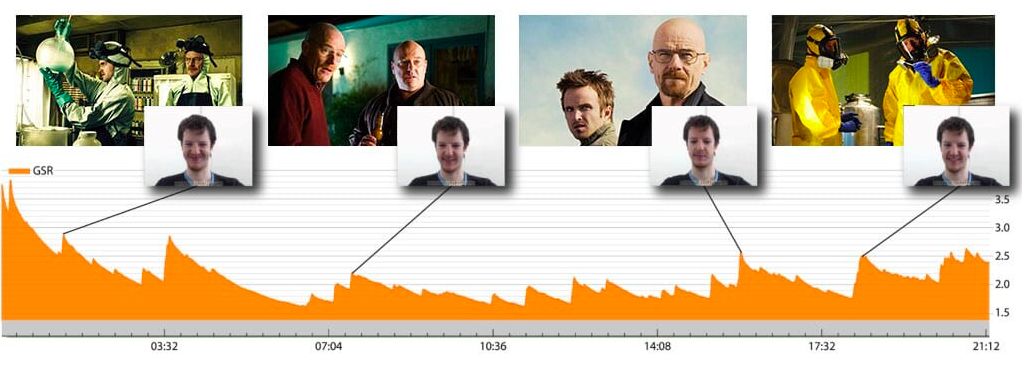Sweaty palms are a classic sign of nervousness, and in Neuromarketing or consumer neuroscience studies, researchers can learn so much more about customers from those sweaty palms. If you have read my previous writing this probably does not surprise you after seeing how brain scans and eye-tracking are utilized to get insights into your decision-making process as a consumer. And if it did come as a surprise, scary or interesting, you can go read my previous posts here for more. But, let’s get back to the topic.
Galvanic Skin Response (GSR) in Neuromarketing.
Galvanic Skin Response (GSR) measures a consumer’s level of emotional arousal (positive or negative) after exposure to external stimuli. In neuromarketing, the stimuli can be an ad, a movie trailer, or a new product. Measured based on electrodermal activity (EDA), that being the continuous variation in the electrical potential difference in your skin, usually measured between the surfaces of your fingertips. From these studies, marketers can assess the adequacy of the marketing performance and make essential modifications if the ideal degree of excitement isn’t reached. (Gill & Singh, 2020)
Positive (happy) and negative (threatening or saddening) stimuli can increase arousal, and in skin conductance, any dimension of emotional response can lead to these detectable changes. The GSR signal is not representative of the type of emotion, but of the intensity of it. The GSR is thus commonly used in conjunction with other techniques such as facial coding and eye-tracking, to understand the intensity and the type of emotional response. For example, take the below image of the GSR results during an episode of “Breaking Bad” as visualized in iMotions which you can see is mixed with facial coding. (Photo source: iMotions)

How does Galvanic Skin Response (GSR) works?
The Psychogalvanic reflex (PGR), also called galvanic skin response (GSR). After stimulation that draws the subject’s attention and leads to an aroused alertness generating an increase in the electrical conductance of the skin (a decrease in resistance). This increase in the electrical conductance, appears about two seconds after stimulation; it rises to a maximum after two to ten seconds and subsides at about the same rate.
The PGR is mediated by the sympathetic division of the autonomic nervous system, it is a part that regulates the flight-or-fight responses for effective reaction in an emergency. In addition, parts of the brain’s premotor cerebral cortex appear to have a role in producing it (This brain part seems to be involved in the selection of appropriate motor plans for voluntary movements).
GSR is the electrical resistance recorded between two electrodes placed usually on the hand with a delicate electric current running between them. A change in autonomic tone (Autonomic tone is the general activity rate of the autonomic nervous system, both the sympathetic and parasympathetic aspects of the system), largely sympathetic, results in alteration of GSR. For example, following sympathetic stimulation, there is a slight increase in sweating, and this slight increase is enough to lower the skin resistance since the sweat contains water and electrolytes, both of which increase the conductivity of skin. (Sharma et al, 2016).
Neural Sense, a Neuromarketing company that offers this service, explains in simple terms what GSR test represents in the below video.
https://www.youtube.com/watch?v=YodW4rz65bY



